How to beat Goliath
Because size doesn’t matter
I have formulated 6 rules which I call David’s rules. These are for anyone facing the big one ...
I read the news that Kumbhalgarh is to be designated a Tiger Reserve, with some trepidation. I recall my trip there and the time I spent with my dear and very hospitable friend, Khem Singh Rathore of Ghanerao, an erstwhile tea planter like myself, whose family are the hereditary rulers of Ghanerao.

Going there is like taking a step back into history, where time passes more slowly, and traditions are still alive. Places like Ghanerao were Jagirs (also called Thikana), which were granted to minor and major noblemen by the Maharaja of that State with the responsibility of raising and supplying troops if he went to war. With the coming of the British Raj, the Maharajas were more interested in playing polo than in making war and so these Thikanas were left to themselves and provided a good income for their rulers. The rulers were more like benevolent landlords and had a good equation with their subjects. Post Indian independence, many ruling families, converted their ancestral homes into hotels; some very luxurious and thanks to their atmosphere, supported by the Rajasthani charm and hospitality became very profitable. A very good alternative income when they could no longer collect land tax.
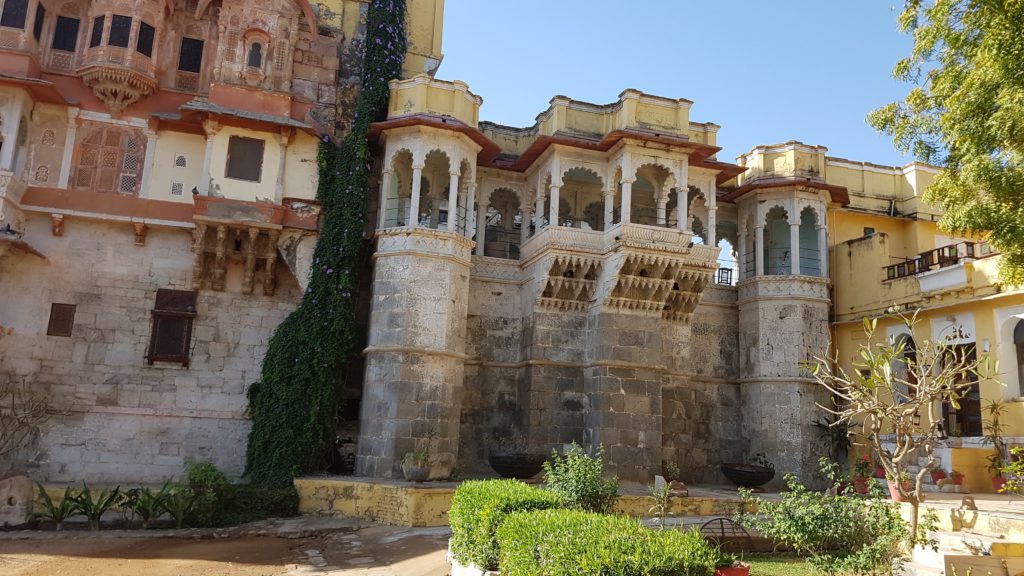
Khem runs a wonderful horse safari tour that goes thorough some of the loveliest Rajasthan countryside. http://www.horsesafari.com/home.html Imagine staying at Khem Singh Rathore’s ancestral property; a beautiful haveli with interesting nooks and crannies and rooms in unexpected places. Some bedrooms opening out into balconies. Others onto a terrace with a very artistic gazebo on which to sit and have your morning cup of tea, watching the sun rise, listening to the calls of partridge and peafowl. Green Rose-ringed Parakeets abound, with the ancient walls of the forts and havelis providing them with excellent holes as nesting sites. Early mornings ring to their noisy chatter and screeching.

The landscape is typical of the Arawalis and the Gorwar plains. Gorwar stretches along the edge of the Aravalli Hills and is bounded by Mewar in the south-east and Gujarat in the south-west. The region has an arid semi-desert climate and falls under the category of the Northwestern thorn scrub forests eco-region, as Wikipedia tells us. There are water bodies, small and large which mostly dry out in the harsh summer. But when I went there was still some water. This attracts migratory birds like Bar-headed Geese and Demoiselle Cranes, especially because local village farmers plant millet and other annual crops in the lake beds. The silt that gets deposited in the annual flooding is ideal to grow these crops and water is at hand. Acacia is browsed upon by what look like feral camels, but which are owned by the villagers and are left to fend for their own food until it is time to work. The lakes have fish and as the water recedes, they are easier to catch and attract the king of fishing eagles, the Osprey.
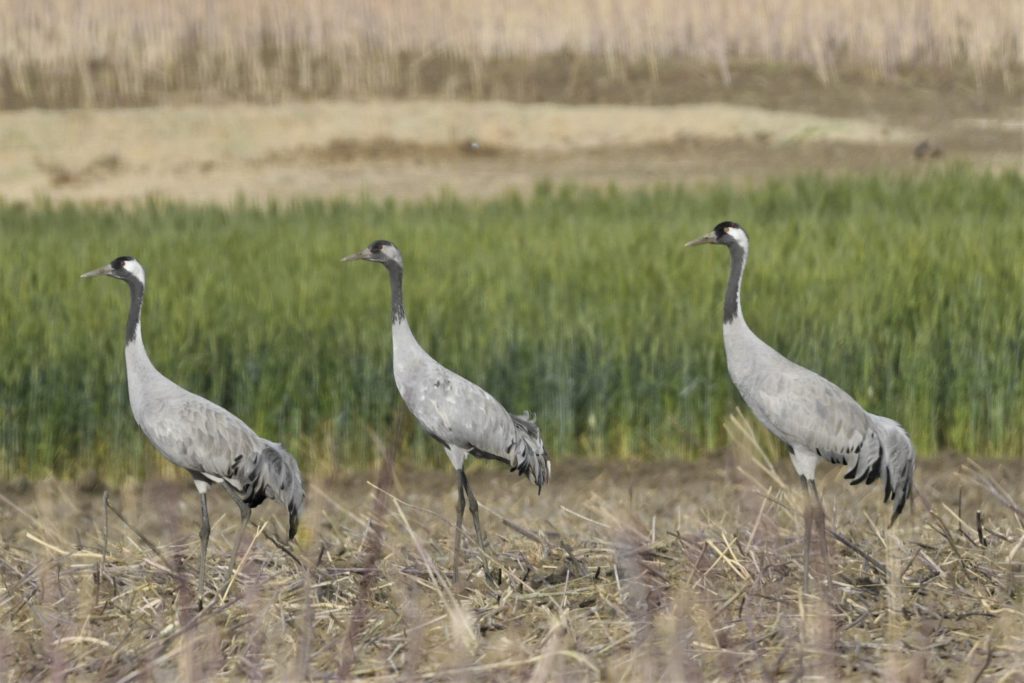
Sand dotted with acacia thorn bush and black rocks rising as small hillocks with caves where one rock supports another. Ideal habitat for the apex predator of this land, the leopard. Khem has Marwari horses, a local breed with the distinctive head of the Arab, large liquid eyes, ears with inward pointing tips. Hardy, intelligent, sure footed, and not above showing you their liking for good treatment with nuzzling you and their disapproval of bad treatment with taking a snack out of your behind. I love Marwari and Kathiawar horses for their personality. They give as good as they get.

I wanted to see a leopard which this area is famous for. Khem and I started very early next morning while it was still dark and we walked up a very dry, slippery hillside and climbed almost to the top until we were sitting directly opposite a cave in the opposite hillside across the small ravine that separated the two hills. It was cold but very invigorating. In that cave, a female hyena had given birth to a litter of three or four cubs. We could see signs of their feeding where the mother had dragged a shoulder of a dead cow to where her cubs could feed on it. We waited as the sun rose. A sight more splendid, one could hardly wish for.
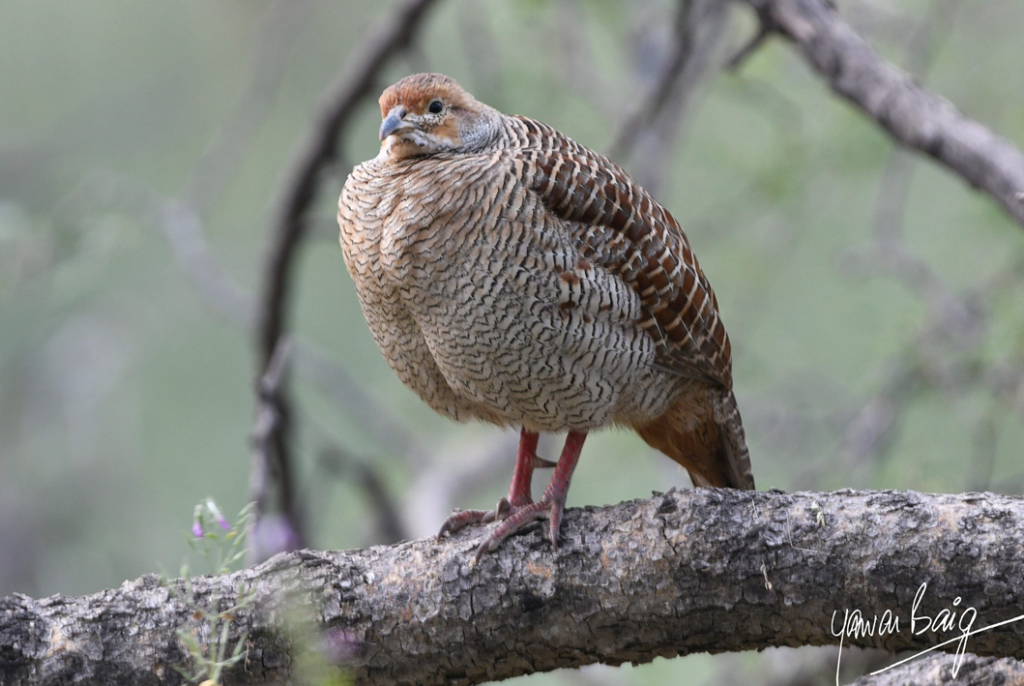
Partridge were calling all around us, the cocks re-staking their claim to their territory. The mournful scream of peafowl announced that the sun was rising, but it was not time yet for them to descend from the safety of their perches. Peafowl are a staple diet of leopards in this area, and they are aware of their status. Wildlife watching consists of a lot of waiting in silence with minimal to no movement; waiting for whoever you are watching for, to feel secure enough to emerge. We waited until the sun was well up in the sky, but the mother hyena was not prepared to show us her cubs. Eventually, we descended from hill and as we made our way back to the car which we had left parked on the road, we saw a leopard in the distance, sunning herself on a rocky outcrop about 300 meters from where we were. Leopards and hyenas compete for prey in this area. The area is very dry and so is not able to support a large herbivore population.
Leopards in this area have a special relationship with the people. Like in most of India’s countryside, if there is a high place, a rock, or a cave, it will have a temple in it. Nothing elaborate. Just a rock marked with vermilion powder to show that it is sacred. Why is it sacred? Nobody knows and nobody is asking. It is sacred and that’s all there is to it. Sometimes, someone will bring a trishul (trident) and stick it into the earth near the rock and passersby leave their offerings of food and light an incense stick or two to leave a mark of their devotion. These temples have become the haunts of the leopards of this region. The leopard is the most adaptable of all cats and uses high spots as vantage points to look for prey.
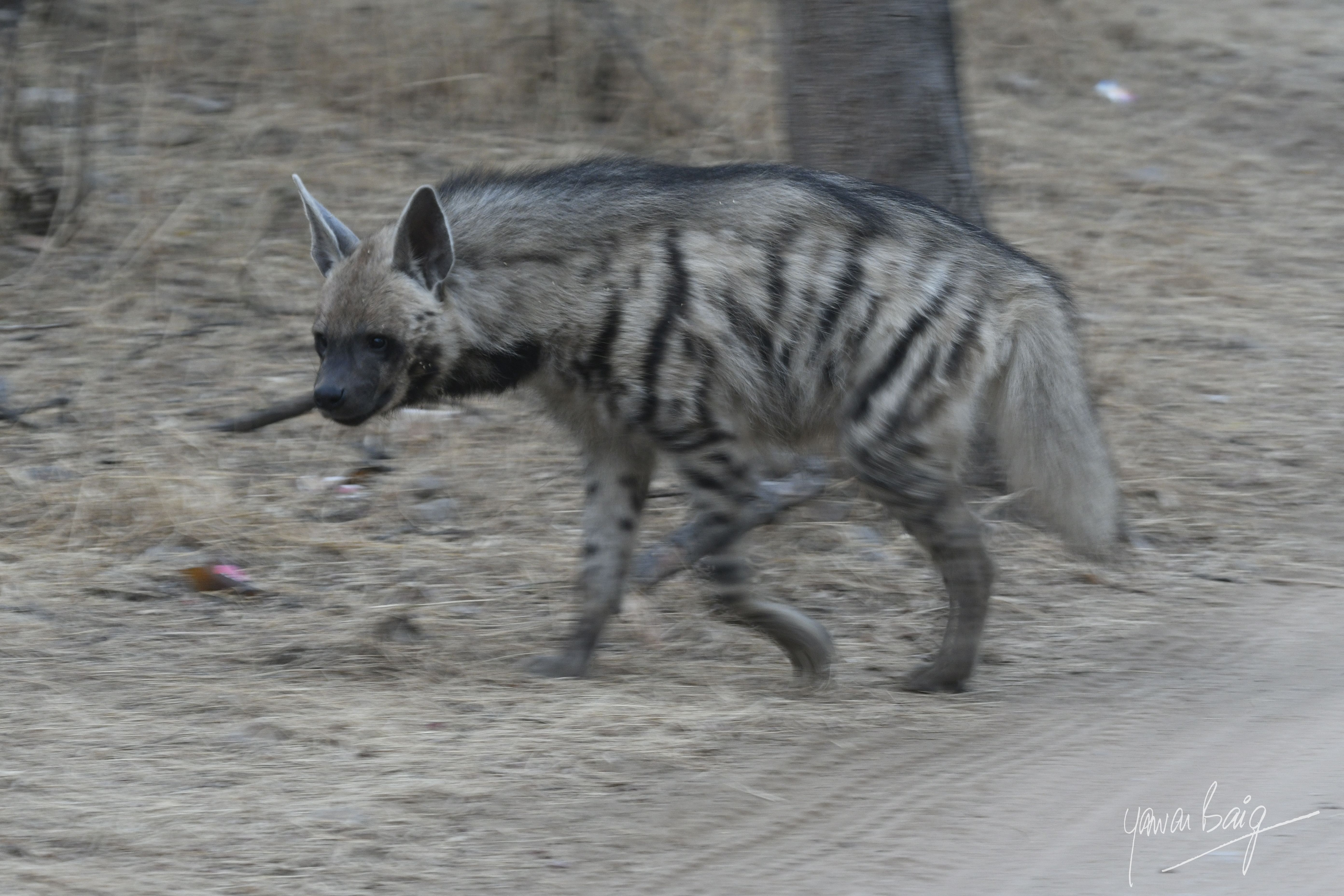
These leopards compete with the Striped Hyena. Wiki has the following to say about this: The striped hyena (Hyaena hyaena) is a species of hyena native to North and East Africa, the Middle East, the Caucasus, Central Asia and the Indian subcontinent. It is the only species in the genus Hyaena. It is listed by the IUCN as near-threatened, as the global population is estimated to be under 10,000 mature individuals which continues to experience deliberate and incidental persecution. It is also the national animal of Lebanon. Hmm! Why the national animal of Lebanon? Maybe because Macron is their favorite politician. I know Macron is French and not Lebanese. But the Lebanese invited him to go there and run their country because they forgot how to do it themselves. Hyena is the national animal? Indeed.

Well, to return to my story, the leopards of Gorwar are unique in that they have a special relationship with their human neighbors. They never attack human beings. They do take a sleeping dog or two or a goat likewise. But humans are simply left to be. People call these leopards, ‘Temple Guardians’. Nobody asked the leopards about this and so I can’t tell you if they accept this responsibility or not. But the temples or rather the caves in which the temples are located are their home. That is why you could be riding one of Khem Singh’s horses and if you saw a leopard looking down at you from his rock-cave you may rest assured that he is not checking out his menu. Leopards are so plentiful and as the apex predators, they are so bold that you get some very good sightings and photo ops and so this area has a multitude of resorts and safari lodges, as they are termed. Wildlife tourism, Indian style, is in full swing with green Maruti Gypsy jeeps zipping around like bugs around a flower.
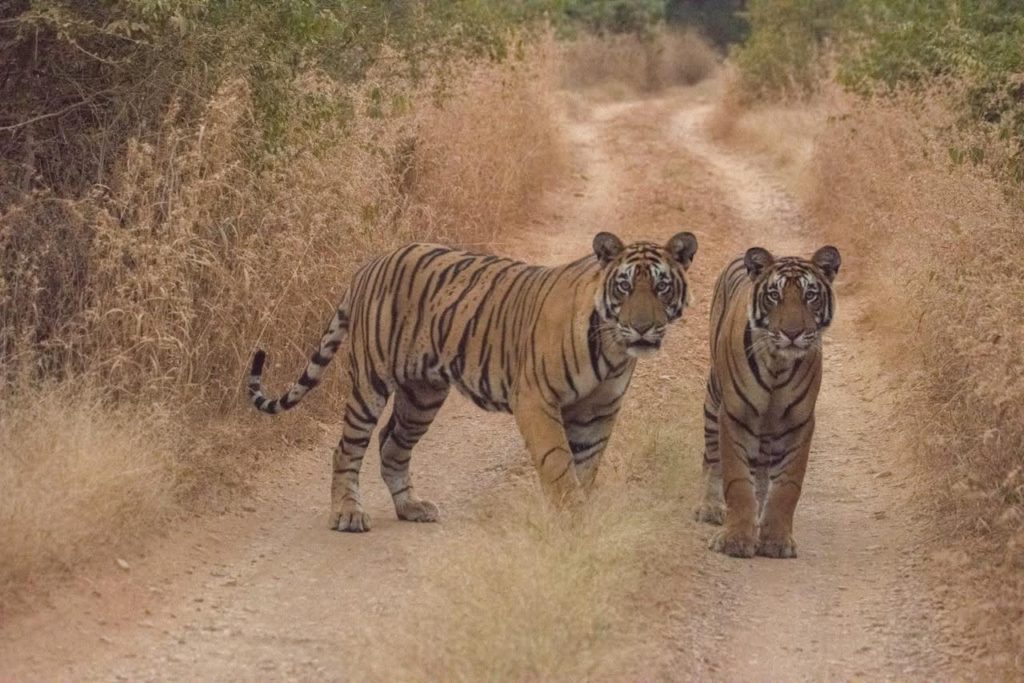
Enter into this world, the tiger. I assume that if this area is to be designated a Tiger Reserve, tigers from some other reserve will be caught and released in Kumbhalgarh. What that is likely to do to the leopard and hyena population, when you introduce a super apex predator who will compete for the same prey animals, is not difficult to imagine. Tigers prey on Sambar (Rusa unicolor), Chital (Axis axis), and Nilgai (Boselaphus tragocamelus).
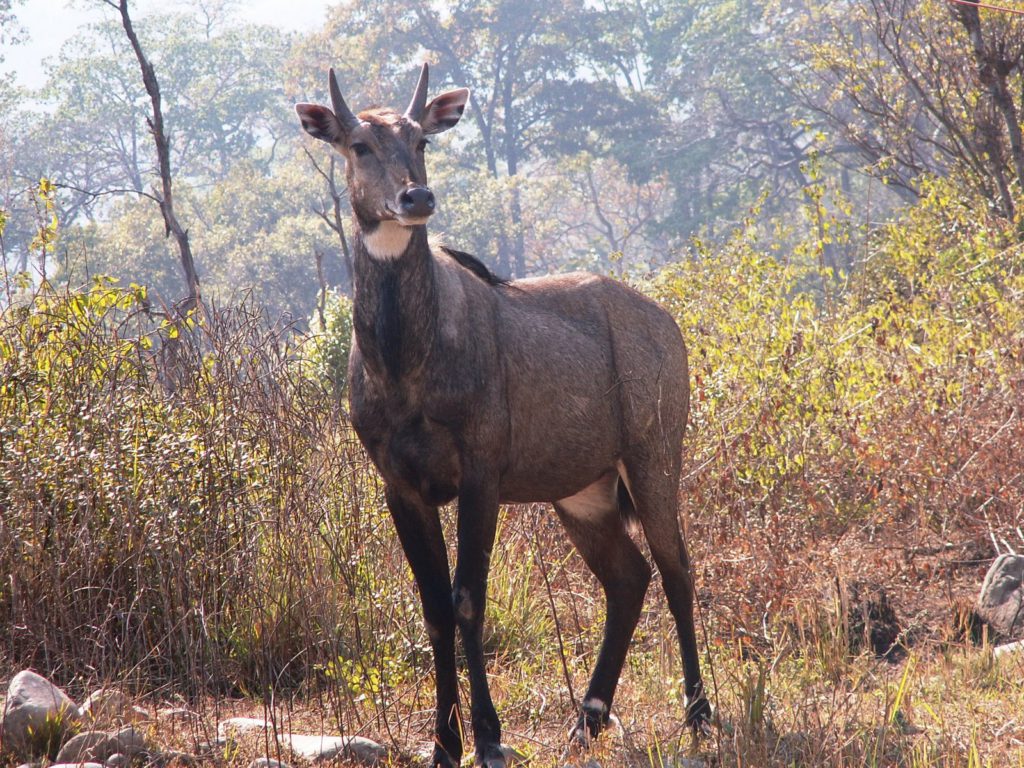
I know that Kumbhalgarh has Sambar and Nilgai, but does it have enough to support a tiger population? As I mentioned earlier, the area is very dry and cannot support a large herbivore population. To add to the challenge, cattle, sheep, goats, and camels of the villagers also compete with deer for forage. If the natural prey of tigers is not available, the tigers are going to hunt cattle. In an area as thickly populated as this, where cattle are routinely sent into the forest to graze, this is like offering candy to a kid. Human animal conflict is inevitable and so is its result in which the animal always pays the price with its life.
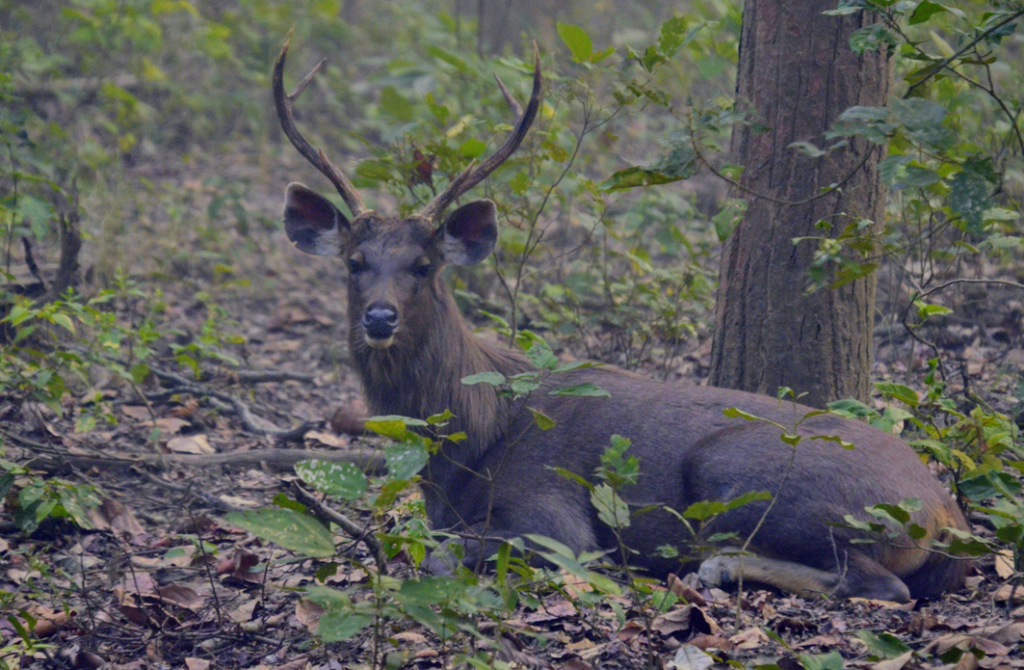
May the powers that be, have the wisdom to address the issues involved and consider them long and hard before introducing tigers into an area that has not seen a tiger for over a century.
Please log in to leave a comment
Loading comments...
I have formulated 6 rules which I call David’s rules. These are for anyone facing the big one ...

One of my friends who comes from ...
I have said this a million times, if I have said it once – the three crimes committed on society with society’s blessing are: Commerci...